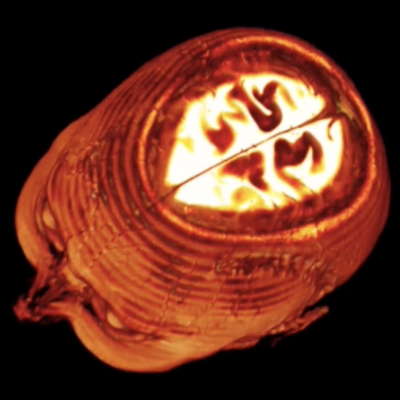 DISCUSSION: Composers Daniel Schorno and John Dante Prevedini discuss creativity, innovation and re-invention with Maria Nockin, Mary Mogil, Giuseppe Pennisi and Roderic Dunnett.
DISCUSSION: Composers Daniel Schorno and John Dante Prevedini discuss creativity, innovation and re-invention with Maria Nockin, Mary Mogil, Giuseppe Pennisi and Roderic Dunnett.
- funding classical music
- Anatol Liadov
- Keyboard Charitable Trust
- Cantaloupe Music LLC
- Leif Segerstam
- Benjamin Jaber
- Dance of the Seven Veils
- Ian Stephens: Clarinet Quintet
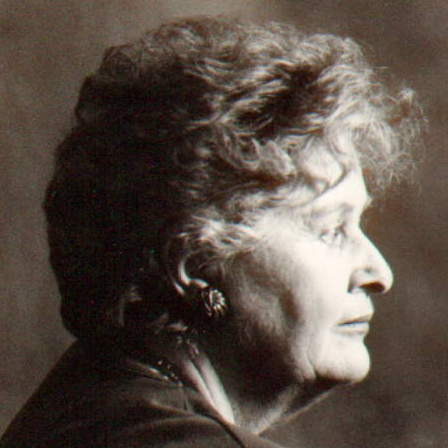 SPONSORED: An Integral Part - Lindsey Wallis looks forward to the Canadian Music Centre's tribute concert to composer Roberta Stephen.
SPONSORED: An Integral Part - Lindsey Wallis looks forward to the Canadian Music Centre's tribute concert to composer Roberta Stephen.
All sponsored features >>
Bohème dated 1896
GIUSEPPE PENNISI reviews Puccini, broadcast from Teatro Regio Torino in Italy
How fresh and innovative is the production of La bohème that on 30 January opened the 2021 Turin Teatro Regio season. I have seen, heard and reviewed several Bohème stagings where Mimi is a drug addict, Musetta a prostitute and Rodolfo and Marcello (as well as Colline and Schaunard) are homeless youngsters sleeping in the street - Salzburg, 2012 - or where the action is set in a banlieue of a Western city nowadays, with rundown, poorly built high-rise blocks, scruffy apartments and trendy restaurants - Rome, 2018. I got used to this kind of production, as well as a bit bored. Probably, many operagoers agree with me.
Consequently, it seemed to me new and creative to see, and listen to, the opera as it was produced at its debut 125 years ago at Turin's Teatro Regio. In this new production, the sets by Leila Fteita and the costumes by Nioletta Ceccolini are carefully based on those designed by Adolf Hohenstein for the debut in 1896; the sketches are available in the Ricordi archives. The photos show how elegant and attractive they are.
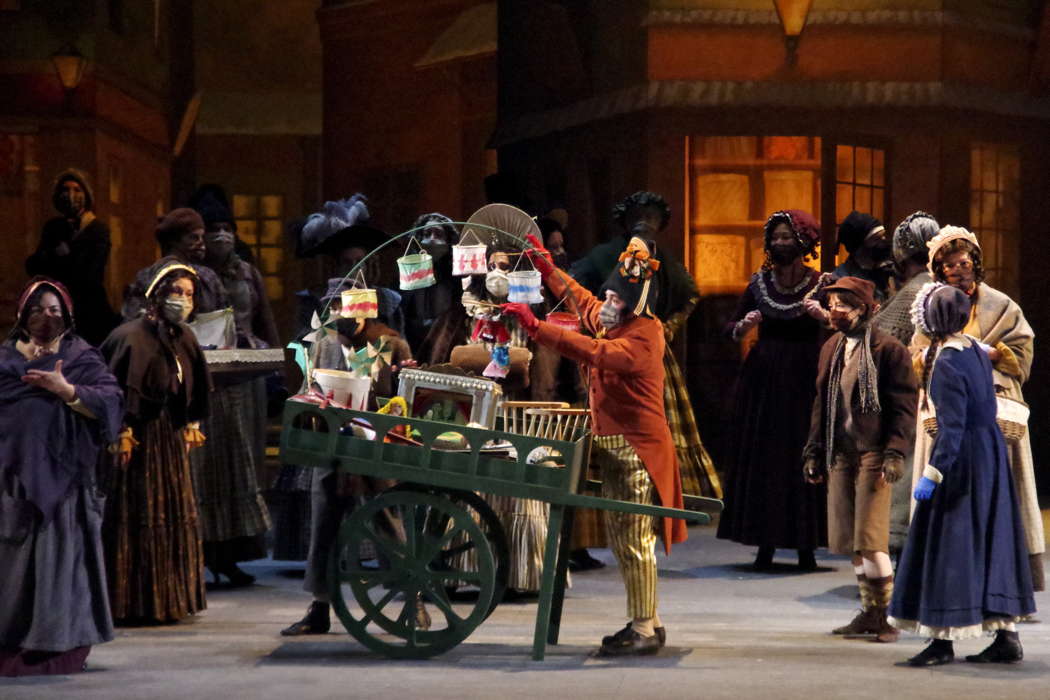
A scene from Act II of Giacomo Puccini's La bohème at Teatro Regio Torino.
Photo © 2021 Ivano Coviello
The stage directors, Pietro Maranghi and Paolo Gavazzeni do not intend to write a new plot, but just to tell the story of 'the only season that never comes back', ie youth. The musical director and conductor, the Israeli Daniel Oren, wants to be quite meticulous in reading Puccini's complex score. The production was shown on national TV - the Classical HD channel - on the evening of 30 January and in the afternoon of 31 January 2021; from 4 February, 20:00 CET, postponed from 1 February due to a technical problem, it should available streamed via the theatre's web site - teatroregio.torino.it
As I underlined here a few years ago - in A Conductor's Opera, 20 June 2011 - La bohème is one of Giacomo Puccini's operas most loved by audiences all over the world. Listeners normally appreciate its delicate melodies and tunes, its sweet arias and passionate duets as well as its lively ensembles, especially the rhythmic concertato at the end of the second act. Generally, these singing numbers are thought to be easy to memorize and hum. Often we forget that in 1896 the premiere was conducted by Arturo Toscanini and that Herbert von Karajan, Leonard Bernstein and Thomas Schippers considered La bohème to be one of the most demanding, challenging and rewarding operas to conduct.
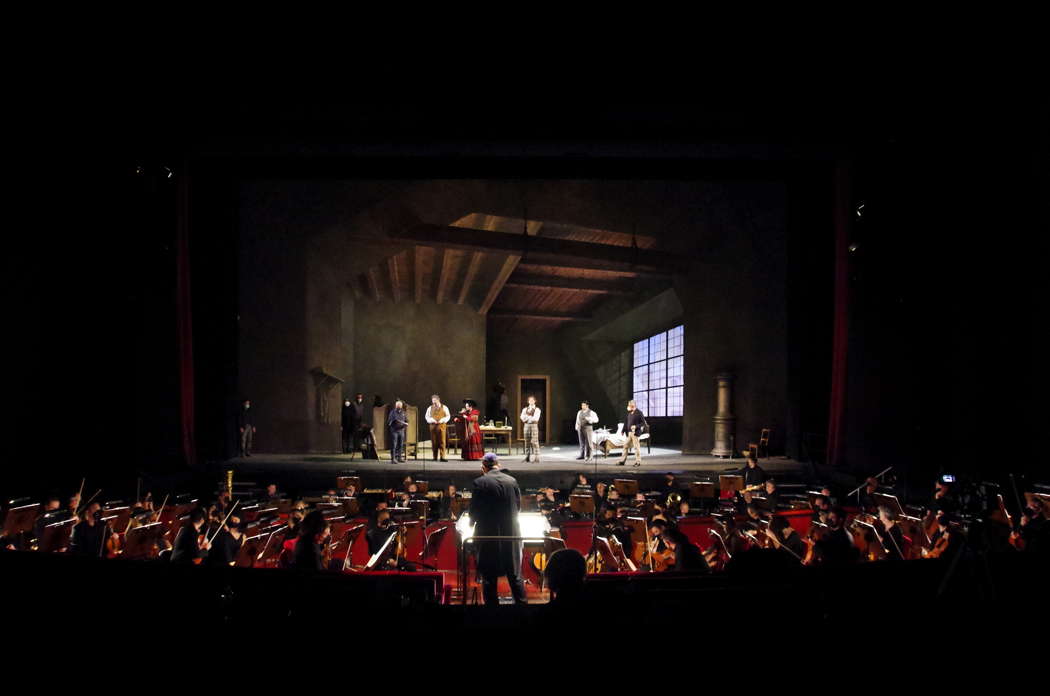
A scene from Act IV of La bohème at Teatro Regio Torino. Photo © 2021 Ivano Coviello
The orchestral score is not a support to the singers as in many other operas that followed Verdi's melodrama (such as Ponchielli's La Gioconda and Rossi's Cleopatra), but it is a complex system involving at least fifteen main themes often intertwined in a variety of manners, following the Wagnerian 'revolution'. This is generally designed to create a situation, a mood and a milieu with only a few strokes. There are dissonances and a molding of words and notes that anticipate Richard Strauss and Leoš Janáček. There are tints and colors to make the audience feel youth as the only season that will never come back. The orchestration makes the audience go from the dreamy atmosphere of the first act via the fast rhythm of Act II and the deep melancholy of Act III to the tragedy and the end of youth in Act IV. Often, general managers of opera houses put their chips on the singers and are happy with a low cost routinier as a conductor. In this production, due emphasis is placed on the orchestral score and, thus, on the conducting. Daniel Oren is a very experienced conductor of international standing. He has specialized in Puccini and Verdi operas and is very empathic with the orchestra members. His conducting is manicured. The interweaving of themes is quite well done.
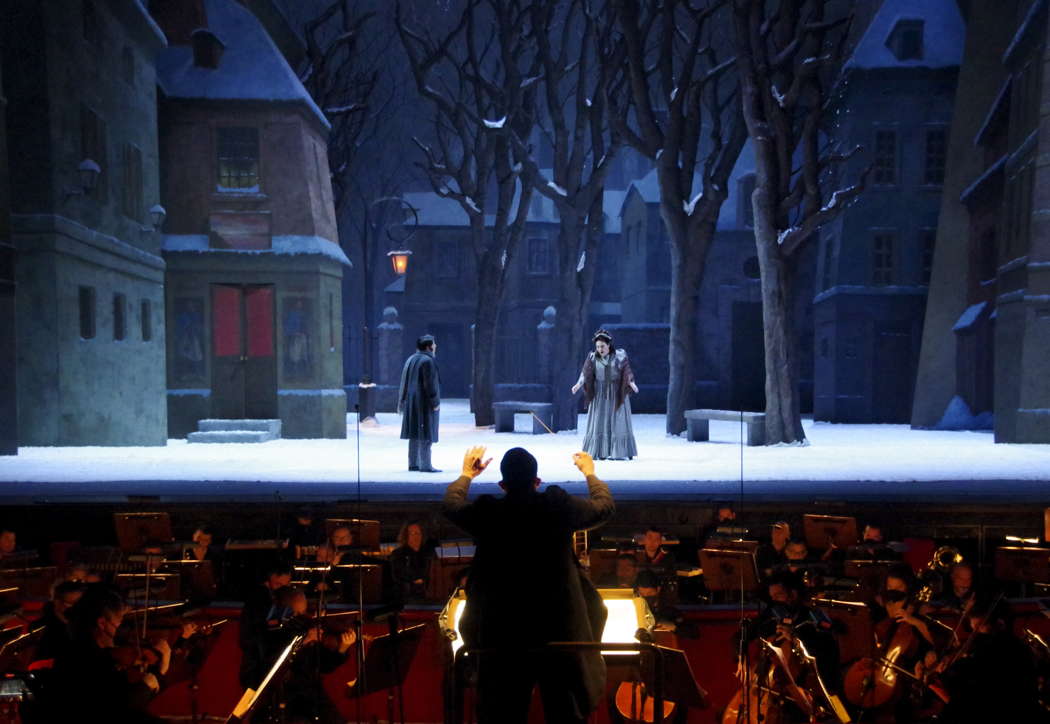
A scene from Act III of La bohème at Teatro Regio Torino. Photo © 2021 Ivano Coviello
In La bohème, of course, the voices do matter. There are arias, arioso, polyphonic passages, and a major concertato at the end of Act II. The cast is young and well synchronized. Rodolfo is Iván Ayón Rivas, a young - born in 1994 - Peruvian tenor I had already heard in the same role about three years ago: he is a generous tenor with a clear voice reaching Cs and F natural easily. Mimi is Maria Teresa Leva, approximately of the same age. She sang La bohème in several Italian theatres and in Barcelona; her register and her emission are very good and she is an effective actress too. However, she is tall and springs good health. On stage, she almost dwarfs the minute Iván Ayón Rivas.
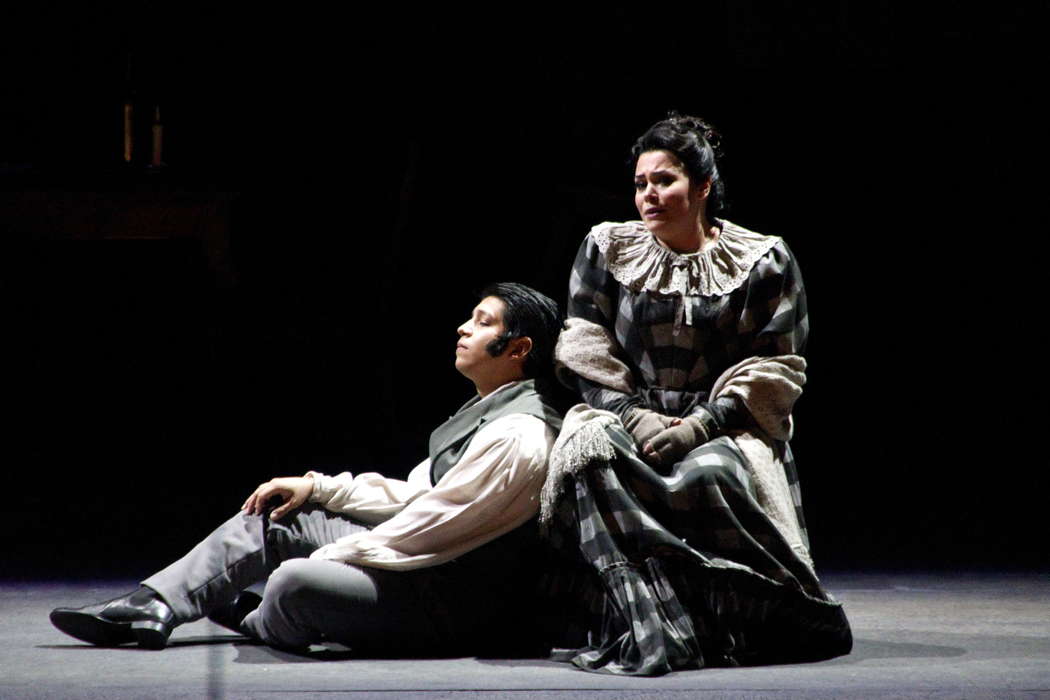
Maria Teresa Leva as Mimi and Iván Ayón Rivas as Rodolfo in Act I of La bohème at Teatro Regio Torino. Photo © 2021 Ivano Coviello
Hasmik Torosyan is a perfect Musetta, a role she has interpreted in several European countries. She has the right spicy touch in both singing and acting. Massimo Cavalletti is a very experienced and articulate Marcello, quite good in his quarrelling with Musetta. Alessio Cacciamani (Colline) and Tommaso Barea (Schaunard) complete the group of the bohemians well. Matteo Peirone takes the small roles of both Benoit and Alcindoro. The chorus, prepared by chorus master Andrea Secchi, is very good.
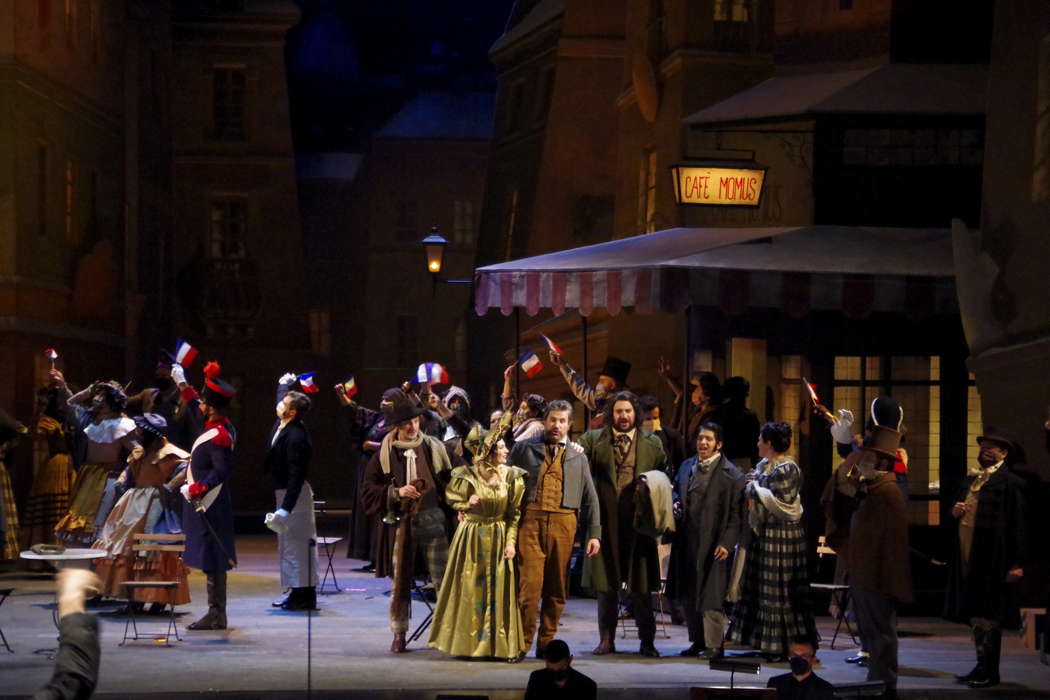
A scene from Act II of La bohème at Teatro Regio Torino, featuring Maria Teresa Leva as Mimi, Iván Ayón Rivas as Rodolfo, Hasmik Torosyan as Musetta, Massimo Cavalletti as Marcello and Alessio Cacciamani as Colline. Photo © 2021 Ivano Coviello
It's worth connecting to Turin's Regio for the streaming.
Copyright © 2 February 2021
Giuseppe Pennisi,
Rome, Italy

FURTHER LIVE CONCERT AND OPERA REVIEWS


